Article created by: Mantas Kačerauskas
Learning history can be fascinating. But history books don't always have all the information. Some interesting nuggets and fun facts can slip through the cracks and we miss out on intriguing historical facts.
Luckily, there are pages like the History Everyday account on Instagram. It's a place for rarely-seen but fascinating historical pictures. With its 354k followers, their mission is to encourage discussion and debate about iconic and controversial historical events. Curious to see what a Mongolian shaman looks like and what is "The Descent of Mombrone?" Scroll down and see for yourself!
To know more about learning the lesser-known facts of history, Bored Panda reached out to the creators of Footnoting History, a podcast that focuses on overlooked and underappreciated areas of history. We chatted with Christine Caccipuoti and Kristin Uscinski about how they find overlooked historical moments and why they're so important. Read their insights below!
- Read More: “History Everyday”: 25 Interesting Historical Pictures That Might Teach You Something New
#1 The Exact Moment When 5 Year Old Harold Whittles, Born Deaf, Hears For The First Time After Being Fitted With A Hearing Aid
At that precise moment, photographer Jack Bradley froze the scene in a frame from behind the lens. The photo was published in the February 1974 edition of Reader’s Digest, in the article “Unforgettable moments caught on film”.
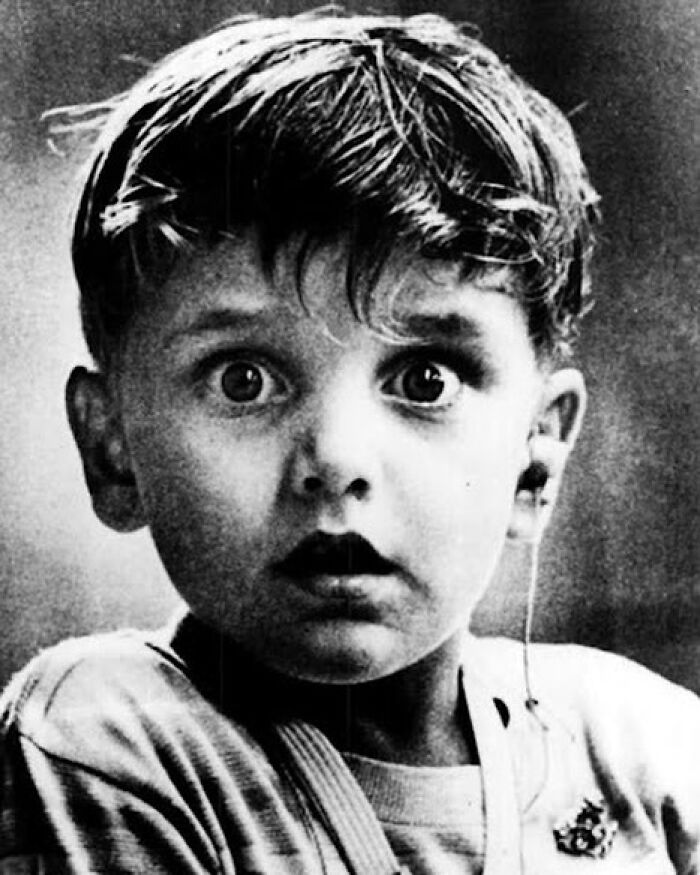
Image credits: historyfromeveryday
#2 Inuk Man Teaches A Boy How To Shoot A Bow And Arrow, Circa 1920
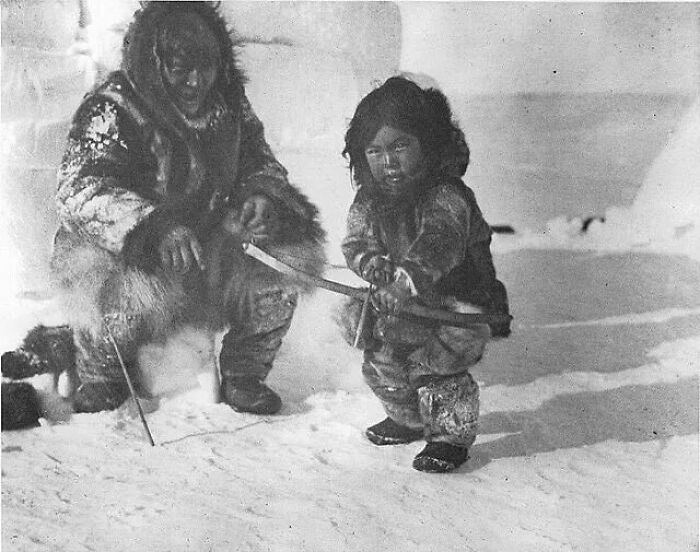
Image credits: historyfromeveryday
#3 On 23rd August, 1989, 2 Million People In Lithuania, Estonia And Latvia Held Hands And Formed A Human Chain 675.5 Kilometers (420 Miles) Long
Protesting against Soviet oppression and their desire to escape communism.

Image credits: historyfromeveryday
#4 The O’halloran Sisters Who Fended Off The Officers Evicting Their Family During The Irish Land War, 1887
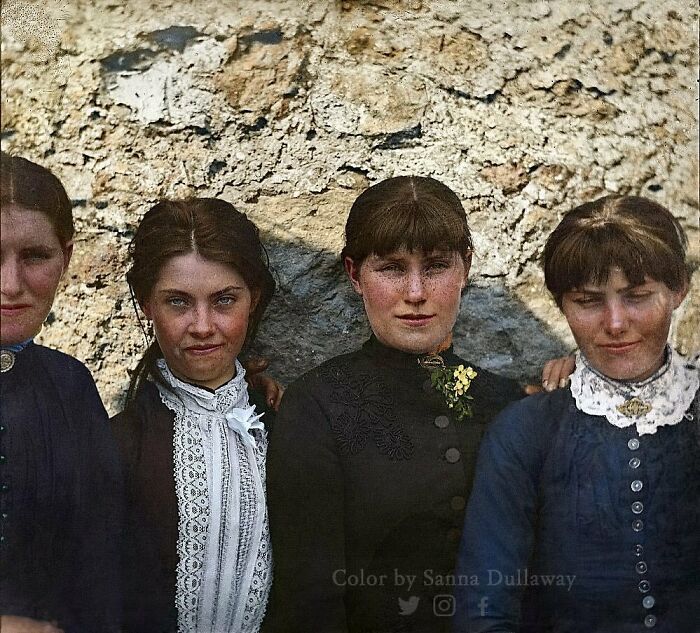
Image credits: historyfromeveryday
#5 A Portrait Of 10 Chiefs Taken In 1891
Their names from top left horizontally to bottom right: 1. Standing Bull 2. Bear who looks back running 3. Has the big white horse 4. White tail 5. Liver bear 6. Little thunder 7. Bull dog 8. High hawk 9. Lame 10. Eagle pipe
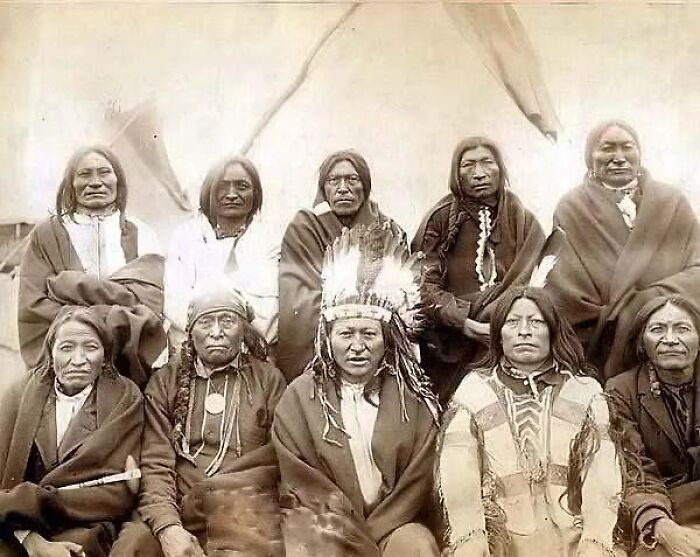
Image credits: historyfromeveryday
#6 George And Willie Muse, Two African American Brothers Who Were Kidnapped As Children In 1899 And Forced To Perform As Sideshow Attractions Because They Were Albinos
George and Willie were prevented from contacting their family by their manager, who kept them as modern day slaves, since they were unpaid. The two boys were told that their mother Harriet was dead – a lie, as their mother was still alive and was constantly searching for them. She eventually found the two boys working for the Ringling Brothers Circus and their family was reunited. Harriet successfully sued Ringling Brothers for the treatment of George and Willie. George Muse died of heart failure in 1972 while Willie carried on until 2001 when he died at the age of 108.
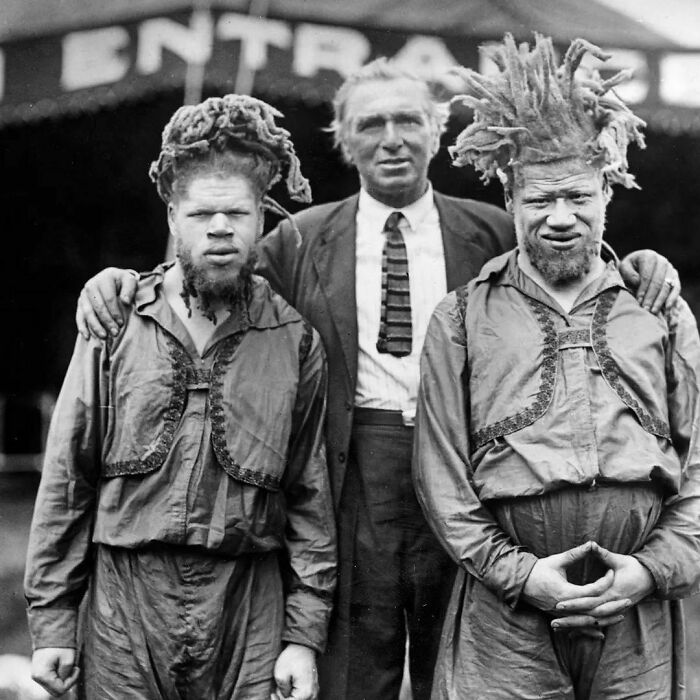
Image credits: historyfromeveryday
#7 A Mother With Her 8 Sons, All Served In Ww2, All Came Home
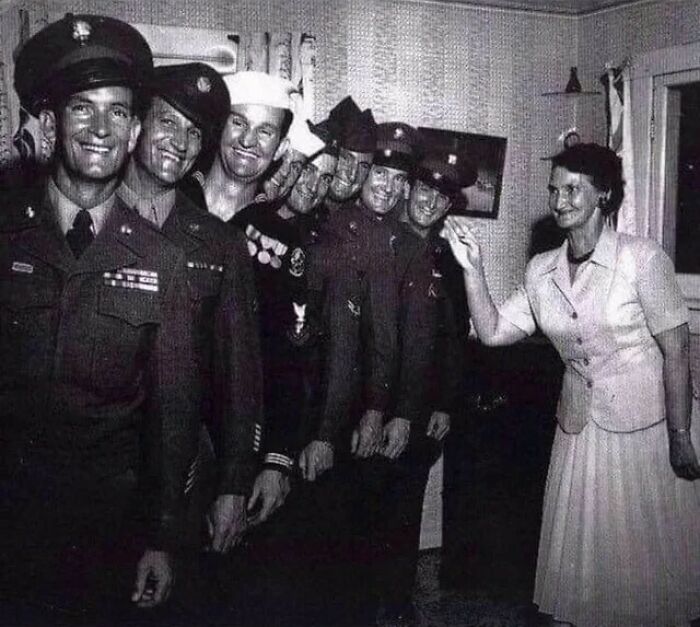
Image credits: historyfromeveryday
#8 Māori Woman With Her Son In 1890s New Zealand
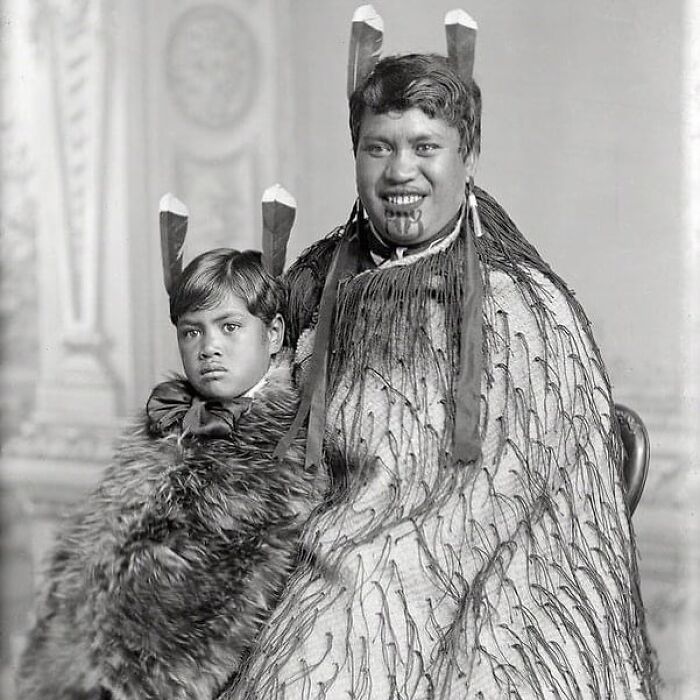
Image credits: historyfromeveryday
#9 Father And Son Crying As They Say Goodbye To Their Relatives Who Are Boarding A Boat To Buenos Aires In Search Of A Better Life During The Economic Hardship In Spain. The Photographer Manuel Ferrol Took This Picture In 1957 At The Port Of A Coruña
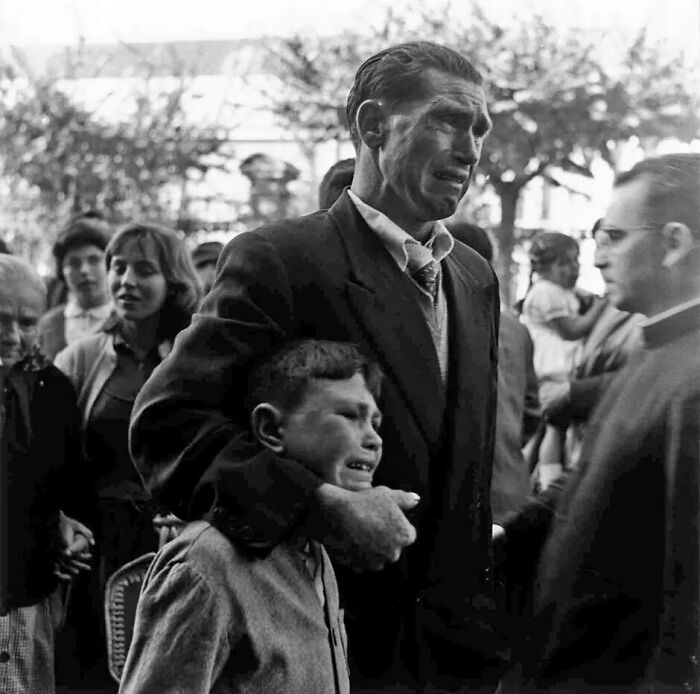
Image credits: historyfromeveryday
#10 A Geisha After Washing Her Hair, Before Styling It, In Japan In 1905
Geisha are a class of female Japanese performing artists and entertainers trained in traditional Japanese performing arts styles, such as dance, music and singing, as well as being proficient conversationalists and hosts. Their distinct appearance is characterised by long, trailing kimono, traditional hairstyles and oshiroi makeup. Geisha entertain at parties known as ozashiki, often for the entertainment of wealthy clientele, as well as performing on stage and at festivals
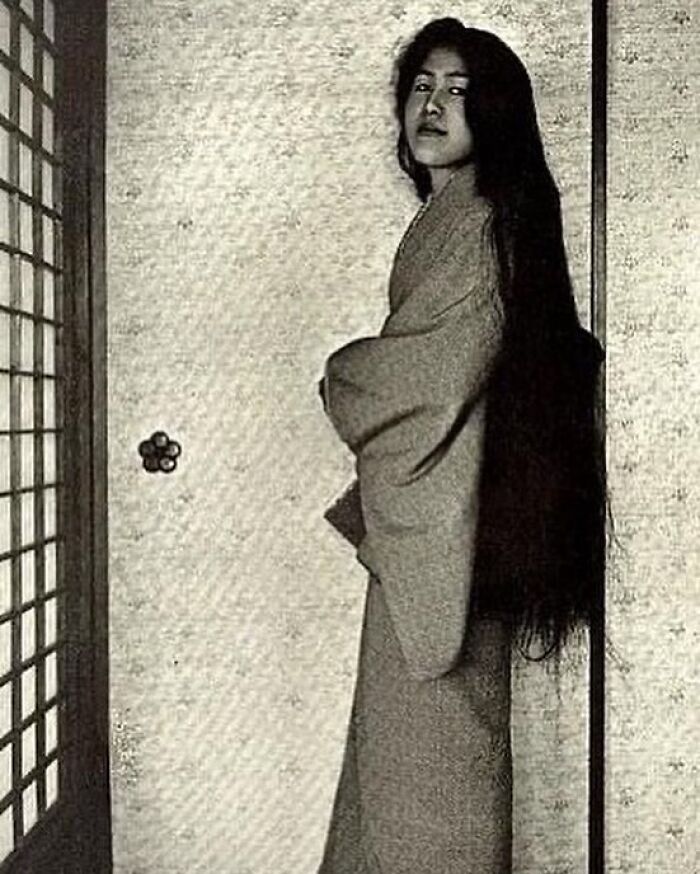
Image credits: historyfromeveryday
#11 Star Wars Cast Out Of Costumes In 1977
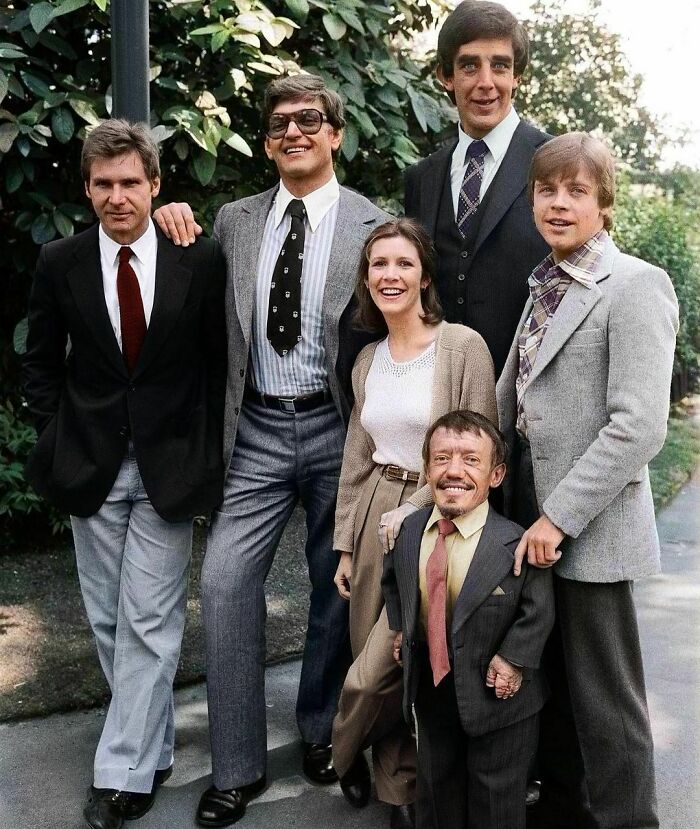
Image credits: historyfromeveryday
#12 18 Year Old Philip Meeting Then 13 Year Old Princess Elizabeth At The Royal Navy College In Dartmouth In 1939
He was studying there and was tasked to accompany the Royals who were on a visit. It was their first 1:1 meeting.
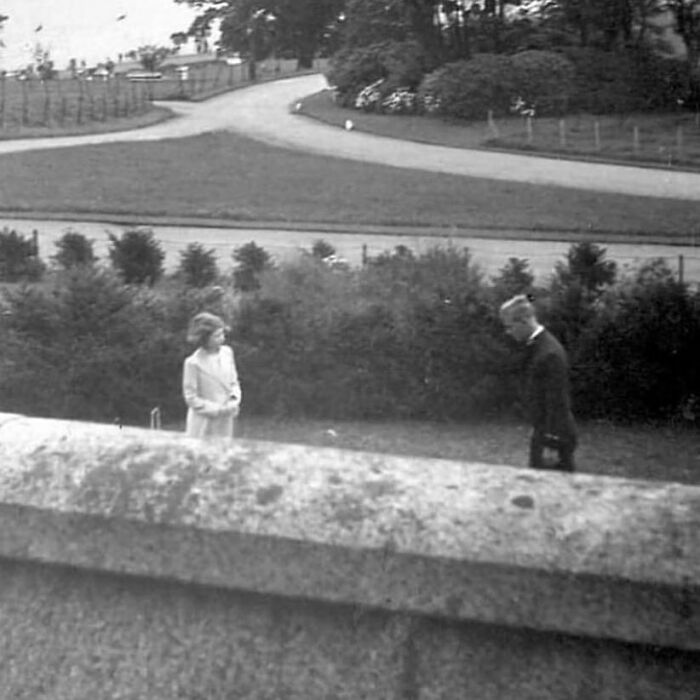
Image credits: historyfromeveryday
#13 This Is How Passengers Would Board Airships. This Photo Shows British Airship R101 In 1930
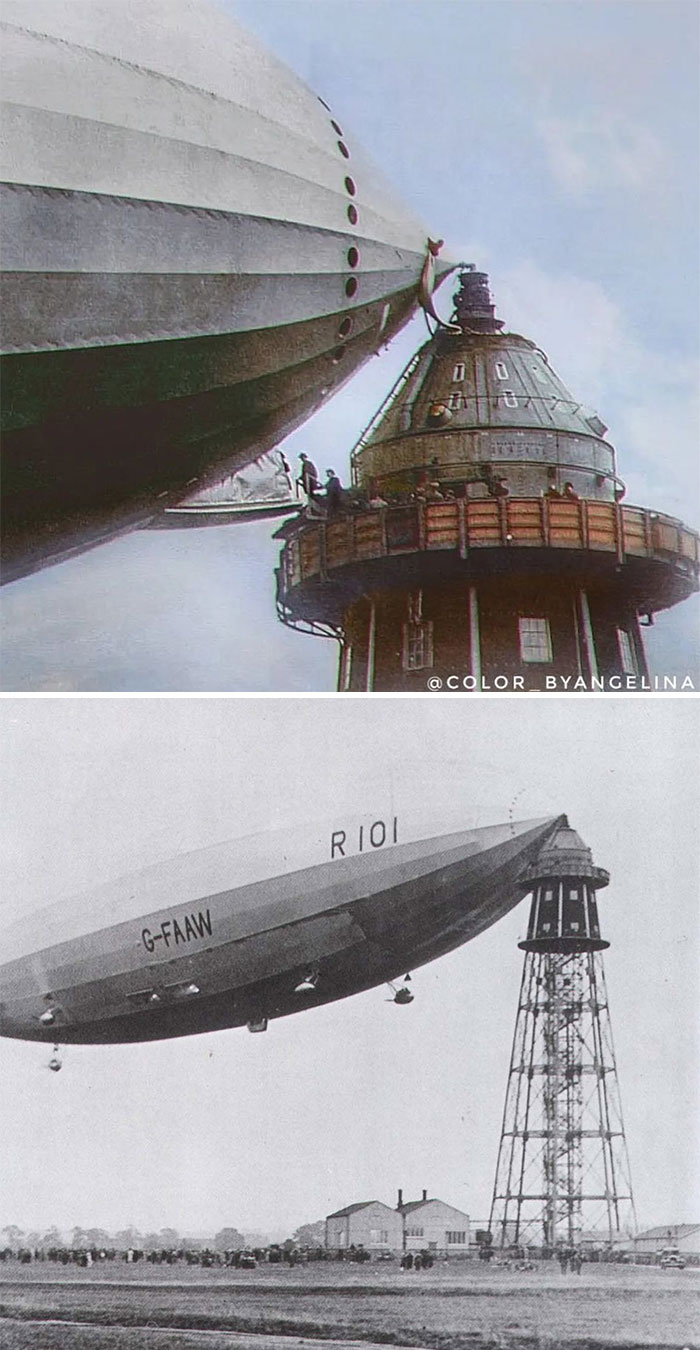
Image credits: historyfromeveryday
#14 Amasunzu Is An Elaborate Hairstyle Traditionally Worn By Rwandan Men And Unmarried Women, With The Hair Styled Into Crests
The hairstyle indicated social status, and men who did not wear Amasunzu were looked on with suspicion. The style was also worn by unmarried women after the age of 18–20 years, indicating that they are of marriageable age.
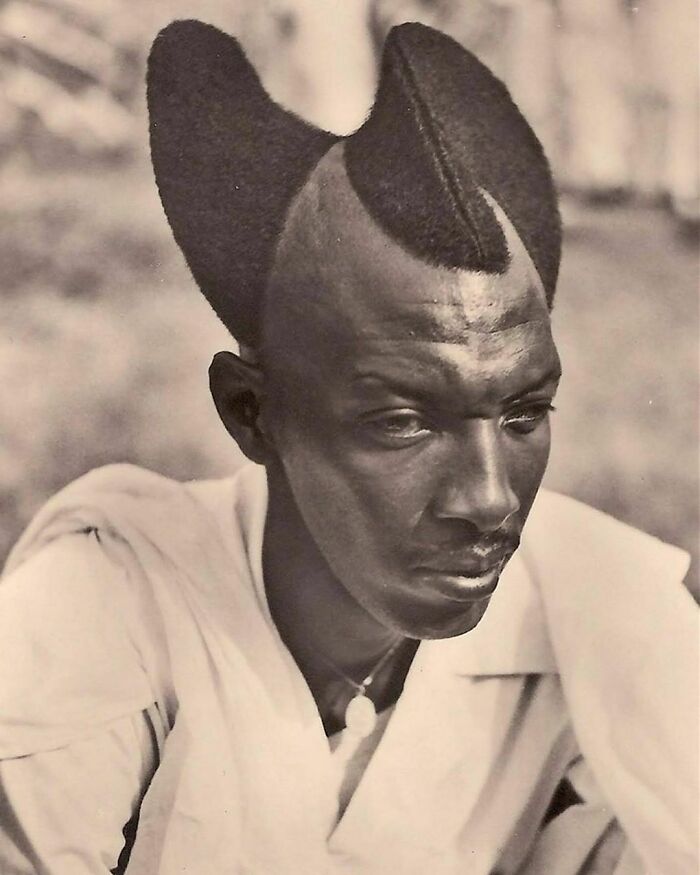
Image credits: historyfromeveryday
#15 Union (Left) And Confederate (Right) Veterans Meet For The Battle Of Gettysburg's 50th Anniversary In 1913
Despite official concerns "that there might be unpleasant differences”, the peaceful reunion was repeatedly marked by events of Union–Confederate camaraderie.
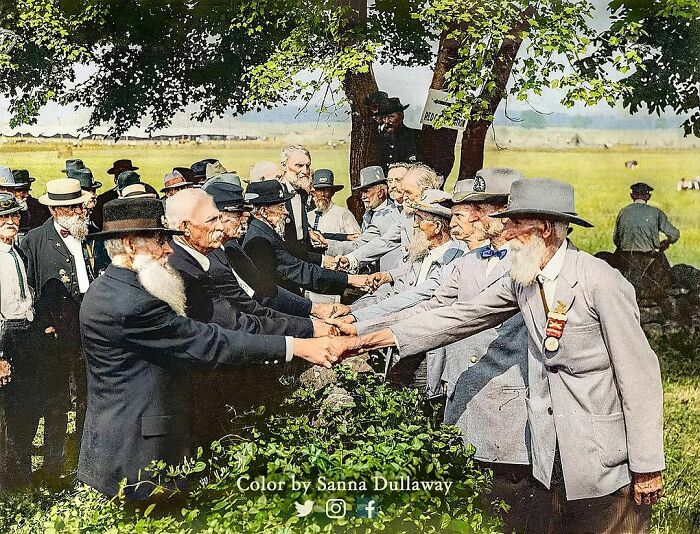
Image credits: historyfromeveryday
#16 Bedouin Mother From Saudi Arabia In 1948
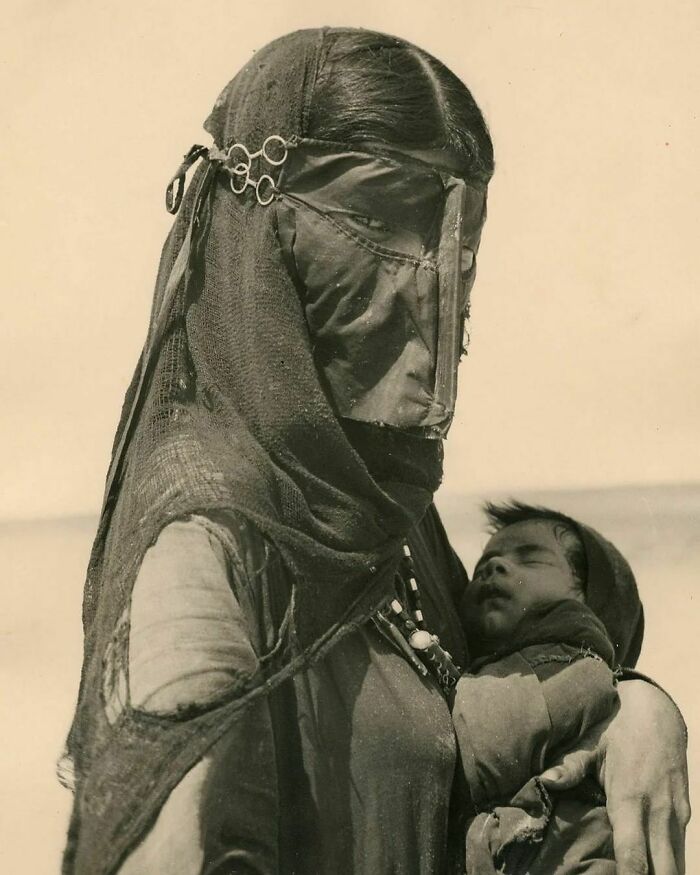
Image credits: historyfromeveryday
#17 Crow Native Americans Watch The Rodeo In Montana, 1941
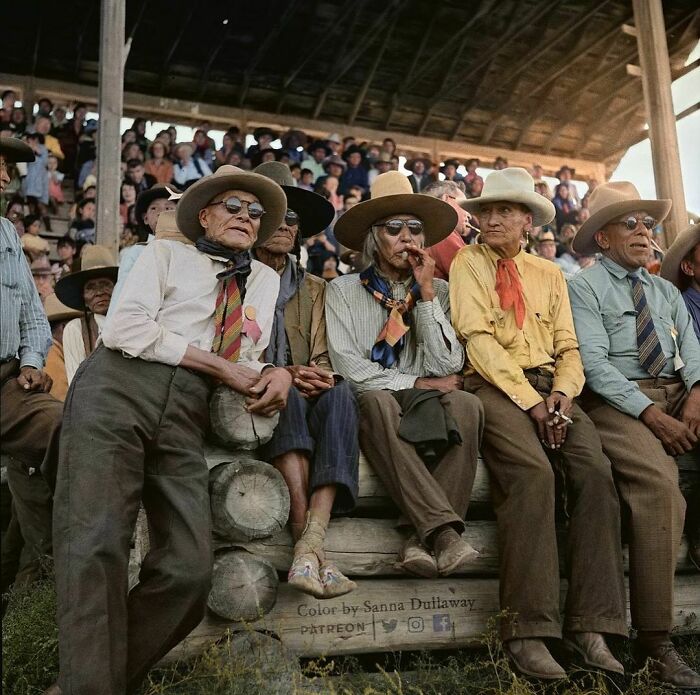
Image credits: historyfromeveryday
#18 Miner From England Sits Down For Dinner With His Wife After A Long Day At Work In 1937
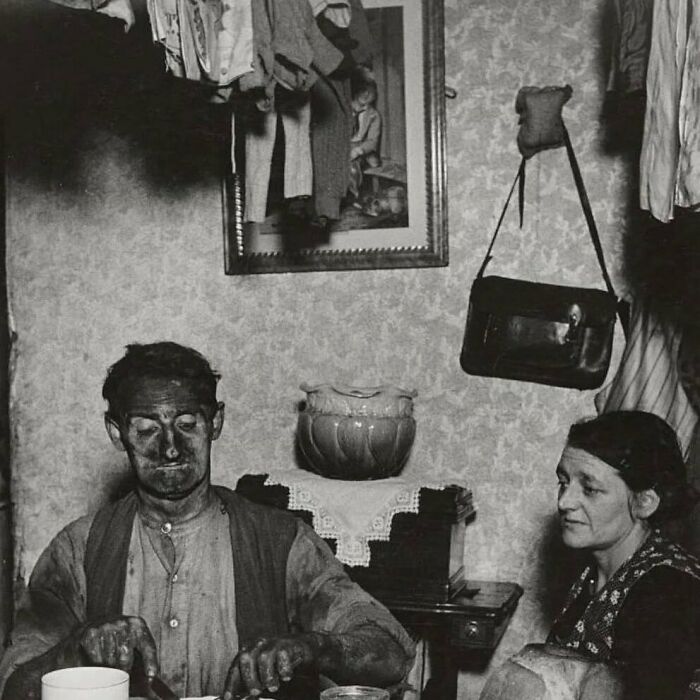
Image credits: historyfromeveryday
#19 The Original Michelin Man From 1898
The Michelin Man is white because rubber tires are naturally a grey/white color. It was not until 1912 that carbon chemicals were mixed into the white tires which turned them black. The change was structural, not aesthetic. By adding carbon, tires became more durable. Michelin also began reviewing restaurants so that more people would travel further distances in their cars to eat at these restaurants. This in turn would wear down their tires faster, and force them to buy more. The Michelin star system goes up to three and has the following criteria: 1 star: "A very good restaurant in its category". 2 stars: "Excellent cooking, worth a detour". 3 stars: "Exceptional cuisine, worth a special journey".
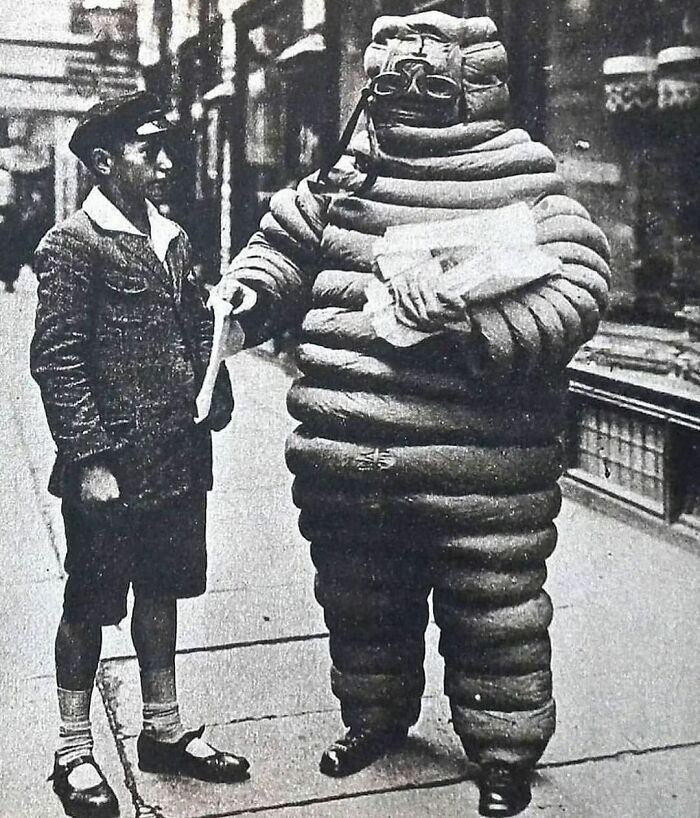
Image credits: historyfromeveryday
#20 This Is A Picture Of A British Veteran Of The Napoleonic Wars, Posing With His Wife
This photograph was taken around 1860, 45 years after the Battle of Waterloo.
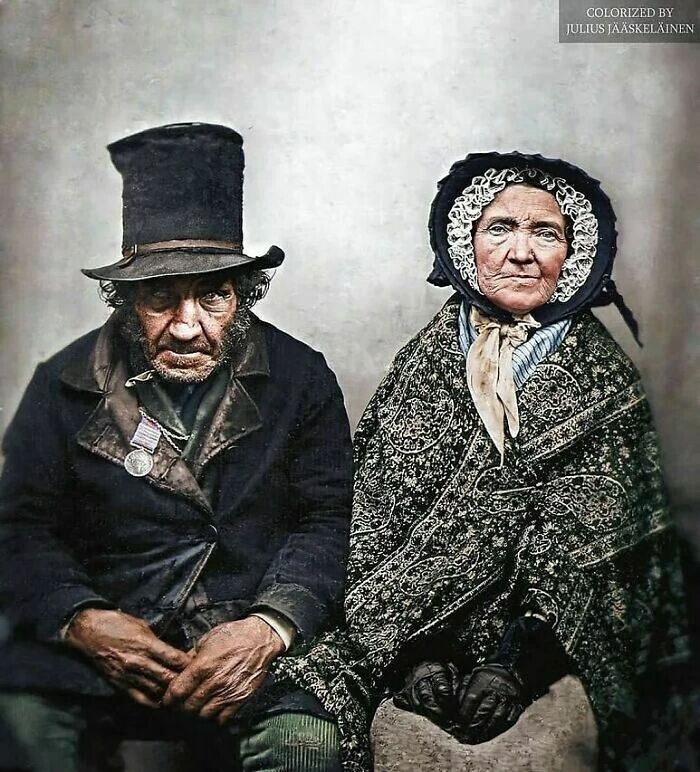
Image credits: historyfromeveryday
#21 Cambridge Students In The 1920s
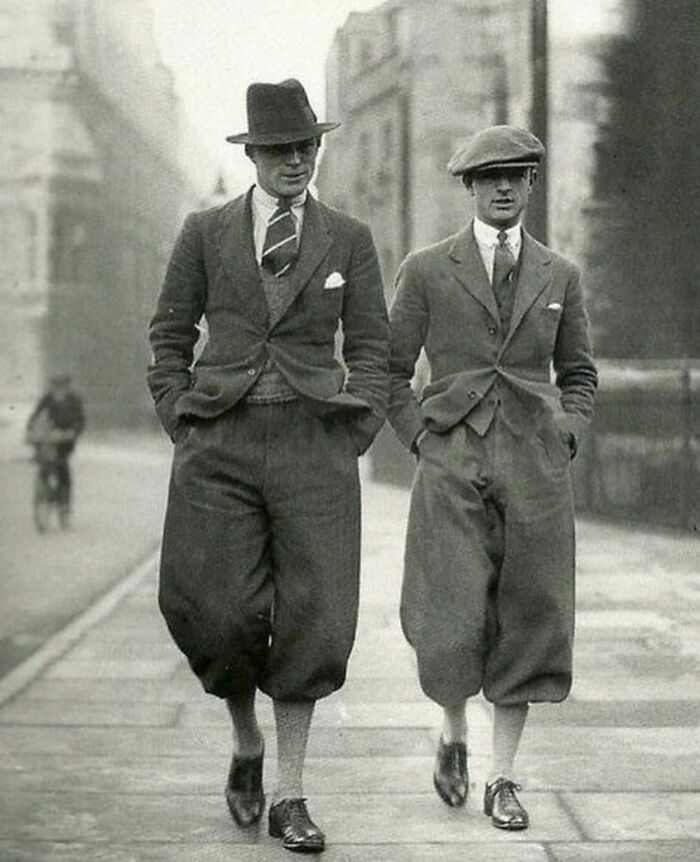
Image credits: historyfromeveryday
#22 Parents Taking Their Baby Ice Skating In The 1930s
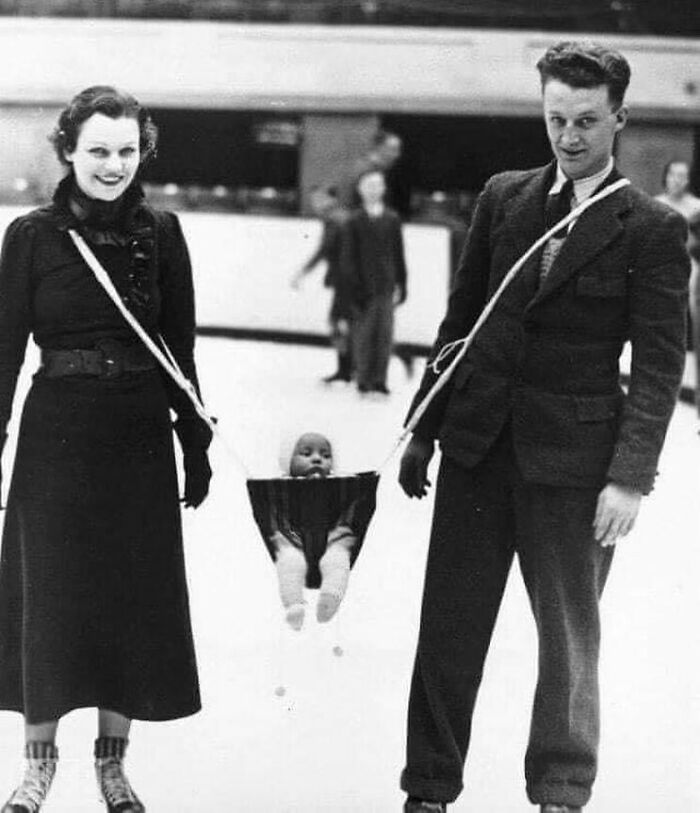
Image credits: historyfromeveryday
#23 Mongolian Shaman In 1909
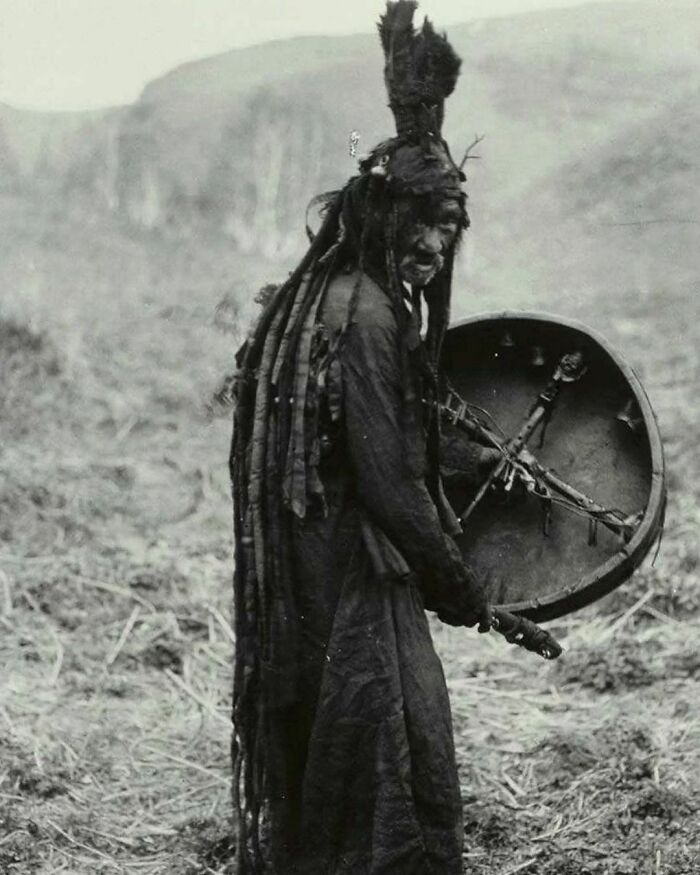
Image credits: historyfromeveryday
#24 Dutch Children After Arriving At Ellis Island, Circa 1900
From 1892 to 1954, nearly 12 million immigrants arriving at the Port of New York and New Jersey were processed there under federal law.
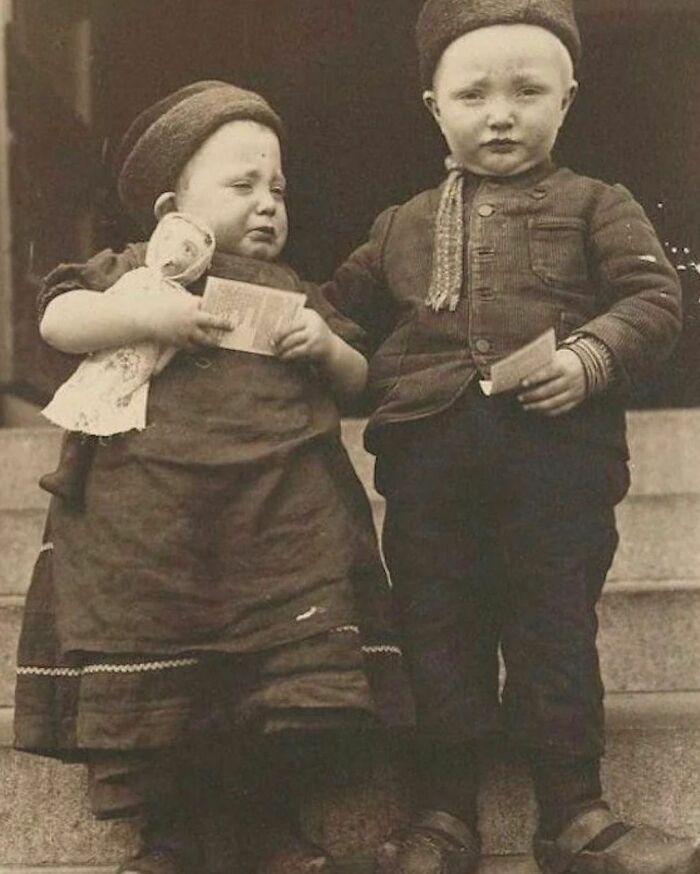
Image credits: historyfromeveryday
#25 Alice Doherty, Photographed Here As A Teenager With Her Family In The Early 1900s
She was born with hypertrichosis lanuginosa, which is an abnormal amount of hair growth in a certain area of the body.
- You Might Also Like: "29 Life Hacks That People Picked Up Along The Way And Can’t Stop Sharing"
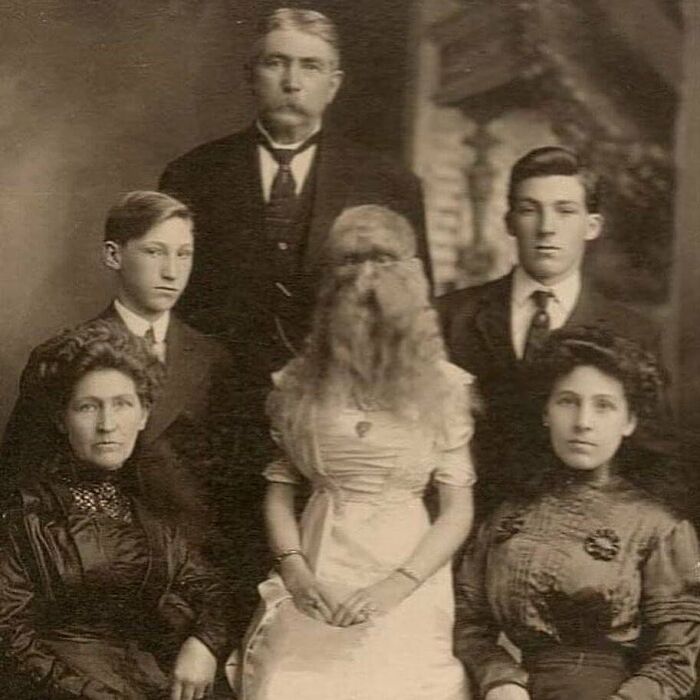
Image credits: historyfromeveryday







